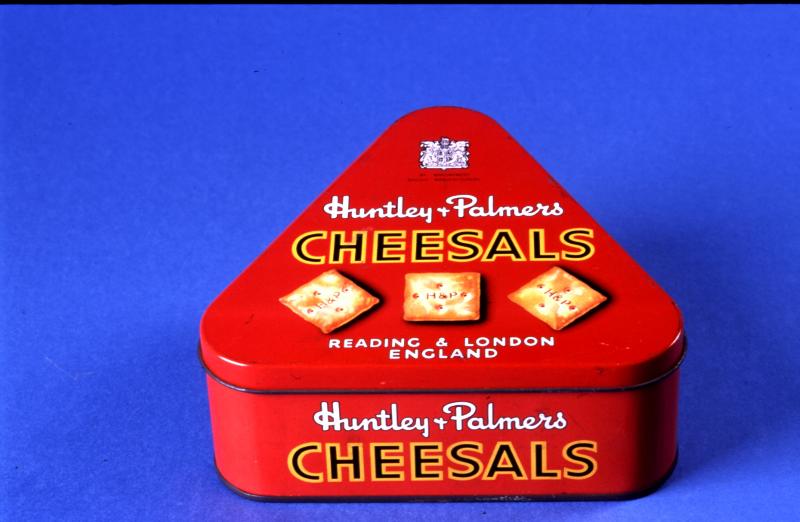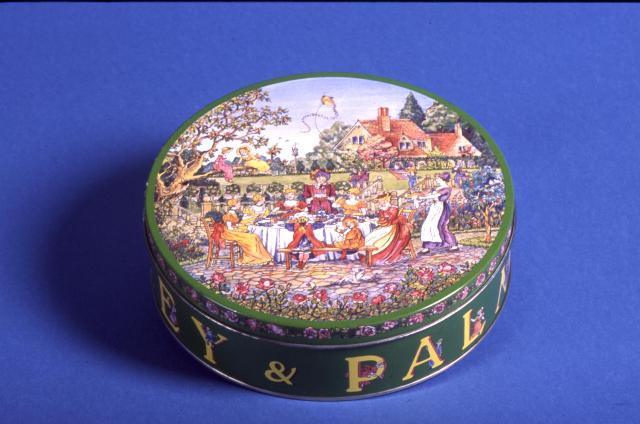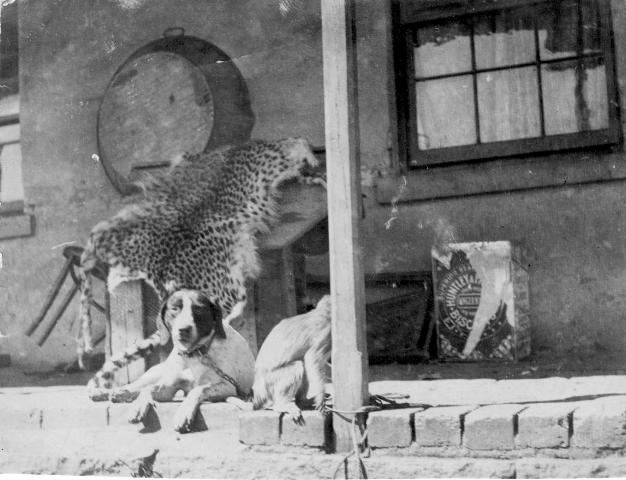After the Second World War, it was easier for overseas customers to buy Huntley & Palmers’ fancy tins than it was for the British housewife. This was because the government reduced the national debt through increased exports. Tin plate was rationed and alternative materials were used. The base of the tin on the right, produced for Queen Elizabeth’s coronation, was made from aluminium.

Produced to commemorate the coronation of Queen Elizabeth II in 1953, this was the first tin made by Huntley Boorne & Stevens after the war - in 1952 the government had released an extra quota of tinplate to make coronation souvenirs. (REDMG : 1992.2.401)
Modern designs
From the 1950s the tins appeared with more modern designs. Photographs began to appear on the tins and for the first time the designs were influenced by television. Cocktail biscuits continued to be popular as did assortments in large square tins.

From 1950 onwards, tins were much more conventional in shape than pre-war, and it was more common to have the manufacturer's name on the tin. This Cheesals tin illustrates the modern designs that appeared after the Second World War. (REDMG : 1992.2.437)
Kate Greenaway
This tin became the centre of tabloid attention when a vigilant grocer noticed lewd images hidden in the shrubbery. These had been added by a mischievous designer and had gone unnoticed until the tin was already on sale in the shops. An embarrassed Associated Biscuits quickly withdrew production of the tin although they later capitalised on the publicity by removing the saucy images and reissuing the tin.

The infamous 1980 Kate Greenaway tin (REDMG : 1992.2.933)
The end of Huntley, Boorne & Stevens
The change to paper packaging drastically reduced the number of tins needed by Huntley & Palmers and although many tins were still sold at Christmas, these were mainly of a square or rectangular shape. When biscuit production at Huntley & Palmers factory in Reading ended in 1976, the work for Huntley, Boorne & Stevens severely diminished. In 1985, Huntley, Boorne & Stevens was bought by The Linpac Group and the supply of tins for Huntley & Palmers finally came to an end.
Reuse of tins
Since the first tins were made by Joseph Huntley in 1832, Huntley & Palmers tins had been produced in all shapes and sizes and their reuse as a practical item was common. The following quote from the Sunday Times of August 1964, describing the work of Royal Navy helicopter officers in Borneo during tribal warfare, illustrates a use of the tins that the original manufacturers probably didn't consider.
'They (H&P biscuit tins) were useful, he said (RN officer), for the heads; just the right size for packing them off to the police in Kuching for identification'.

This early colonial image was sent to Huntley & Palmers in 1966. The sender commented that it showed the ubiquity of Huntley & Palmers biscuits, alongside the Englishman's bath and dog (plus monkey!). (REDMG : 1997.82.519a)
The next section explores different tins from 1950s onwards.





